Group 13 moves graffiti from the street into the gallery. The curator takes scrawls in an alley and passes them off as legitimate works of art. It's a transformation that has already happened elsewhere but has found a home of sorts in Taipei, at AMPM.
The Canadian aerosol artist Dbsk1 founded the gallery in Ximending at the beginning of the year and it has held a number of graffiti and photography exhibitions, including installations.
The route from avant-garde to mainstream, from the underground to overground, is a well-trodden one and the only surprise is established gallery owners here have not capitalized on it sooner.
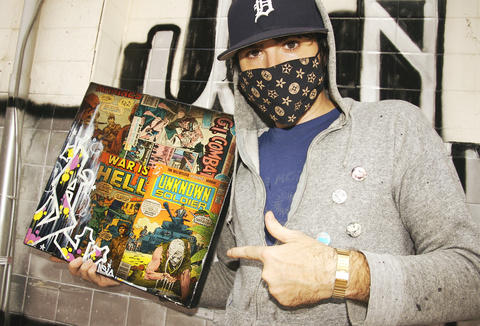
PHOTOS: JULES QUARTLY, TAIPEI TIMES
"We show the low-brow and underground because no-one else is doing that here. At home [Montreal] there's plenty of shows," says Dbsk1, who uses a number of aliases and is usually photographed with a face mask.
"I have to protect myself. I still do a lot of street stuff and it also keeps the mysterious street scene vibe goin', as opposed to the commercial scene."
Writing graffiti in Taipei is a public order offence under the category of defacing public property and offenders are subject to fines of NT$4,500.
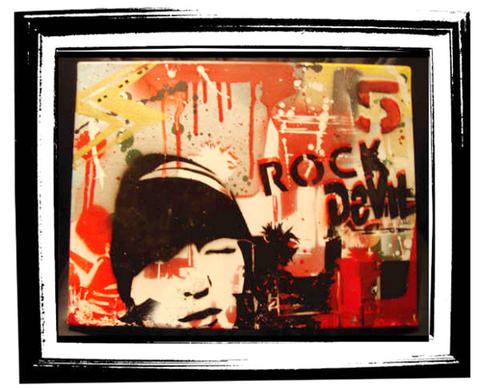
In practice, however, the authorities are fairly lenient and Taipei seems liberal compared with some Western countries. Dbsk1 says he has been pulled a couple of times for tagging but was not fined.
In the UK, former prime minister Tony Blair signed a charter saying, "Graffiti is not art, it's crime," New York set up an anti-graffiti task force and Chicago fines perpetrators US$500.
"It's more easygoing than back in Canada. There's places here where you can do stuff legally - like the levee walls - and where it's kinda accepted," Dbsk1 says.
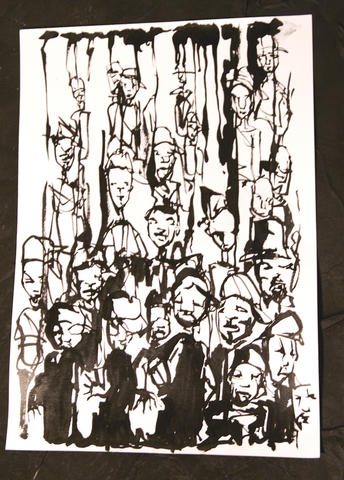
You can check graffiti out for yourself at sites like the Jianguo Beer Factory, Huashan Culture Park, all around Ximending (especially Cinema Park) and the East Side shopping district around Zhongxiao East Road.
CityStalker is possibly the most famous/infamous local graffiti artist and has been working since 2000, when tags in New Zealand inspired him. He was caught once in Ximending.
"I was working on a piece and this guy was watching me, but I paid no attention. Then the police turned up and it turned out the guy watching was a community officer," CityStalker says.
"They started writing me a red ticket when the [community officer] says, 'Why don't you let him finish the piece, it will look better if he does.'"
Despite the gallery, Dbsk1 emphasizes the "close-to-the-edge" buzz of illegal graffiti work. He admits to walking a "blurry line" between sellout and commercial artist.
Though he has done work for Philips, the city's MRT company and worked as a graphic artist on games, the credibility factor is important to him.
CityStalker, on the other hand, seems more comfortable with the transition. He studied art at college and calls himself a "new school artist," working primarily with stencils and spray paint.
He sees the AMPM show as a way to move out of the shadows and into the spotlight, where he can make a living doing what he's good at.
From its anti-establishment roots in 1970s New York, graffiti has moved from the underpass into the art arena where it is commoditized.
It mirrors the history of art production, which often begins with outsiders and the critics saying, 'That's not art,' then it becomes the norm.
Writing graffiti is as ancient as cave painting and tagging is about as basic as a dog marking its territory by urinating against the wall. Even so, in addition to being ascribed a value, graffiti has developed an aesthetic.
As such, the artist's medium has changed even though the intent is the same, namely to express something. The 13 local and international artists presented at AMPM all do so in fresh, colorful and innovative ways.
From the lettering and anime-inspired work of Jahan, to the graphic designs of Winston and combo lettering of Dabs1, the Group 13 Exhibition shows off the best in local street art.
Trick and Utah's photo installation, Setr's freight train documentary and the film Reefer Madness add to the mix. There will also be DJs, refreshments and an art raffle at the opening.

During the Metal Ages, prior to the arrival of the Dutch and Chinese, a great shift took place in indigenous material culture. Glass and agate beads, introduced after 400BC, completely replaced Taiwanese nephrite (jade) as the ornamental materials of choice, anthropologist Liu Jiun-Yu (劉俊昱) of the University of Washington wrote in a 2023 article. He added of the island’s modern indigenous peoples: “They are the descendants of prehistoric Formosans but have no nephrite-using cultures.” Moderns squint at that dynamic era of trade and cultural change through the mutually supporting lenses of later settler-colonialism and imperial power, which treated the indigenous as
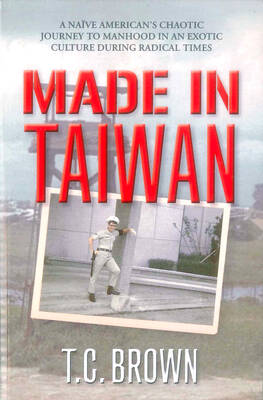
By 1971, heroin and opium use among US troops fighting in Vietnam had reached epidemic proportions, with 42 percent of American servicemen saying they’d tried opioids at least once and around 20 percent claiming some level of addiction, according to the US Department of Defense. Though heroin use by US troops has been little discussed in the context of Taiwan, these and other drugs — produced in part by rogue Chinese Nationalist Party (KMT) armies then in Thailand and Myanmar — also spread to US military bases on the island, where soldiers were often stoned or high. American military policeman
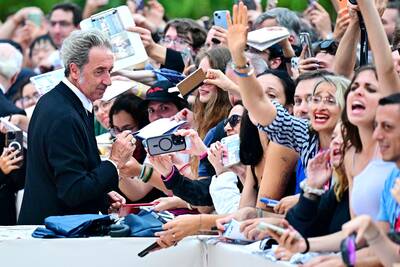
The Venice Film Festival kicked off with the world premiere of Paolo Sorrentino’s La Grazia Wednesday night on the Lido. The opening ceremony of the festival also saw Francis Ford Coppola presenting filmmaker Werner Herzog with a lifetime achievement prize. The 82nd edition of the glamorous international film festival is playing host to many Hollywood stars, including George Clooney, Julia Roberts and Dwayne Johnson, and famed auteurs, from Guillermo del Toro to Kathryn Bigelow, who all have films debuting over the next 10 days. The conflict in Gaza has also already been an everpresent topic both outside the festival’s walls, where
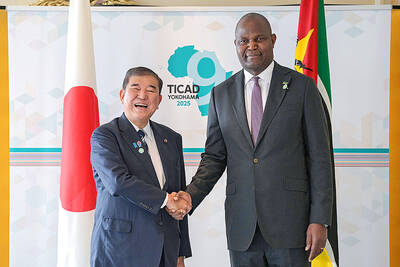
An attempt to promote friendship between Japan and countries in Africa has transformed into a xenophobic row about migration after inaccurate media reports suggested the scheme would lead to a “flood of immigrants.” The controversy erupted after the Japan International Cooperation Agency, or JICA, said this month it had designated four Japanese cities as “Africa hometowns” for partner countries in Africa: Mozambique, Nigeria, Ghana and Tanzania. The program, announced at the end of an international conference on African development in Yokohama, will involve personnel exchanges and events to foster closer ties between the four regional Japanese cities — Imabari, Kisarazu, Sanjo and